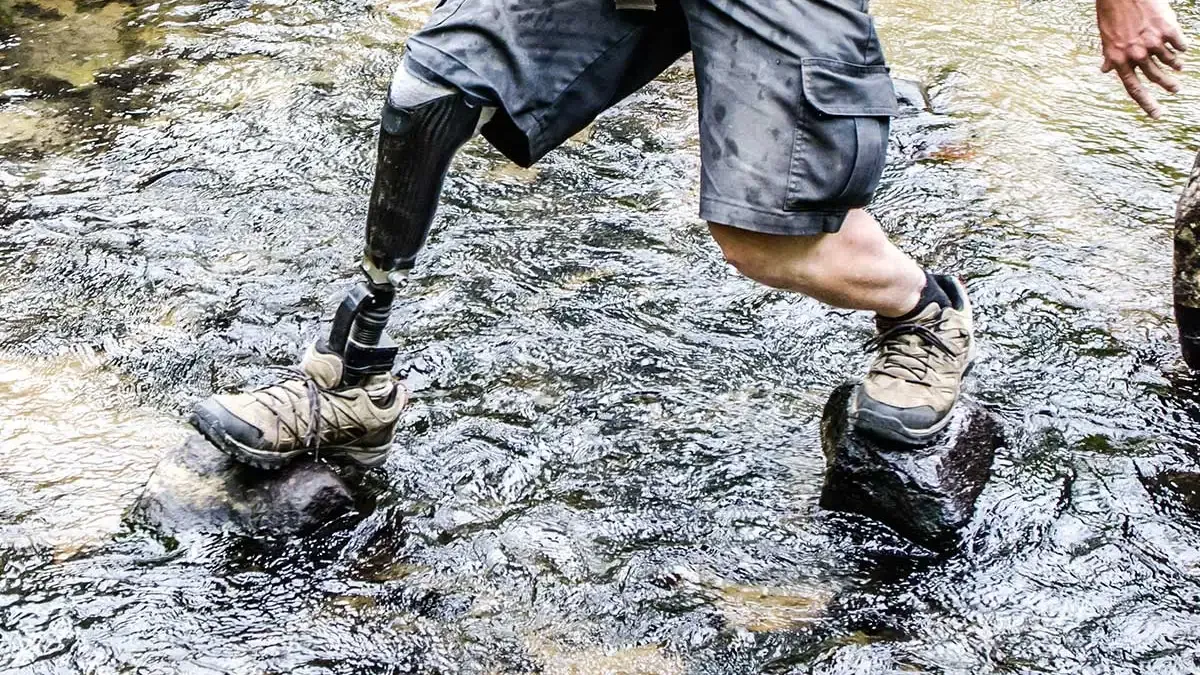Hiking is more than a hobby. It’s a deep connection with nature, a mental reset, and a physical challenge all in one. For amputees, that bond doesn’t have to break. With the best prosthetic foot for hiking, the trail becomes an open invitation again. Technology has come a long way. Today, hikers with limb loss can enjoy rugged terrains and steep climbs with greater ease than ever.
Let’s explore the top benefits of using the right prosthetic foot for your next hiking trip.
1. Reduced Fatigue on Long Hikes
Hiking can push the limits of endurance. Long trails demand steady pacing and strong energy reserves. The best prosthetic foot for hiking helps conserve energy by making your gait more natural. A smoother gait means you use less energy with each step.
Moreover, some prosthetics are made with lightweight materials that don’t weigh you down. Less weight, combined with spring-like response, reduces the effort needed on uphill climbs or long treks.
2. Improved Terrain Adaptation
Nature isn’t flat. Trails twist, climb, and dip at every step. One of the biggest perks of using a top-quality hiking prosthetic is how it adjusts to these changes. High-quality prosthetic feet mimic natural foot movement. They adapt to rocks, slopes, and uneven paths almost in real time. As a result, each step feels smoother.
Additionally, many hiking-specific prosthetics feature split-toe designs and flexible soles. These help keep you balanced on rocky or muddy trails. This support means fewer slips and more confident steps.
2. Reduced Fatigue on Long Hikes
Hiking can push the limits of endurance. Long trails demand steady pacing and strong energy reserves. The best prosthetic foot for hiking helps conserve energy by making your gait more natural. A smoother gait means you use less energy with each step.
Moreover, some prosthetics are made with lightweight materials that don’t weigh you down. Less weight, combined with spring-like response, reduces the effort needed on uphill climbs or long treks.
3. Increased Stability and Safety
Stability on uneven trails is a big deal. Roots, rocks, and loose gravel can easily trip anyone up. However, with a reliable hiking prosthetic, you gain better balance. Many are designed with shock-absorbing features and torsion adapters. These help absorb impact and give you more control.
In addition, wider footplates provide a solid base. This increases grip and reduces the risk of ankle rolls. The right prosthetic doesn’t just support your walk—it helps prevent falls.
4. Better Shock Absorption
Hiking often includes downhill stretches, which place pressure on your joints. Each downward step can jar the body. That’s where a prosthetic foot built for hiking shines. It absorbs shock and reduces stress on your residual limb.
Also, some hiking prosthetics use heel cushions or carbon fiber springs. These materials help soften impact and return energy during motion. This can make your hike feel less punishing on your knees and hips.
5. More Freedom to Explore
Freedom matters. With the right prosthetic, trails that once felt impossible become possible again. You no longer have to skip out on camping trips or group hikes. That confidence to say “yes” is a powerful benefit.
Also, hikers using quality prosthetics report a better sense of independence. You set the pace. You choose the trail. And you don’t need special assistance to do it.
6. Support for Different Weather Conditions
Hiking doesn’t pause for bad weather. Rain, snow, and heat are part of the adventure. A good hiking prosthetic can handle it all. Many feet are water-resistant or have sealed components. This keeps them working well in wet or muddy environments.
Furthermore, rugged soles grip better in slippery areas. Whether you’re walking across wet leaves or icy rocks, this added traction can make a huge difference. So, you’re ready for nature, whatever it brings.
7. Boosted Confidence and Mental Well-Being
Every hike completed builds pride. Each summit reached proves you’re strong. The best prosthetic foot for hiking plays a huge part in that mental growth. It helps you focus on the trail instead of worrying about every step.
Moreover, hiking in nature improves mood. With the right foot, you’re not just walking again—you’re reclaiming joy, peace, and confidence.
8. Custom Fit for Personal Needs
No two hikers are the same. Some enjoy steep, rocky climbs. Others prefer gentle forest paths. The best part about modern hiking prosthetics is how customizable they are. You can choose a foot that fits your hiking style.
Also, many prosthetic centers offer trial fittings or adjustments. This makes it easier to find one that suits you well. You deserve comfort, and today’s options give you just that.
Conclusion
The right equipment makes all the difference. With the best prosthetic foot for hiking, the world opens back up. Nature welcomes everyone. Whether you’re walking a simple trail or conquering mountain paths, you don’t have to sit out. You can move freely, climb confidently, and enjoy the adventure.
In addition to the physical benefits, this freedom supports your mental and emotional well-being. It reminds you that you are capable of anything you set your mind to.
Get the support that moves with you on every trail. OP Center is here to guide you toward better comfort and confidence.



